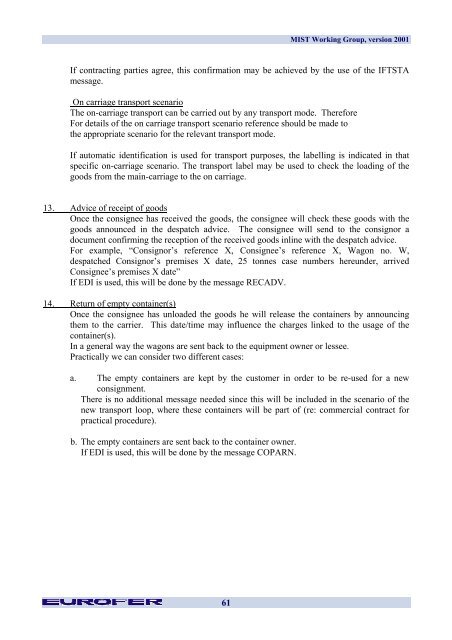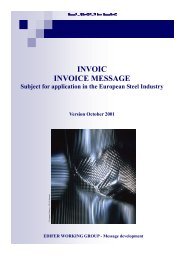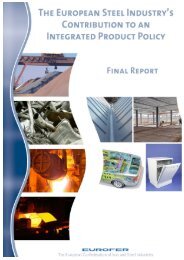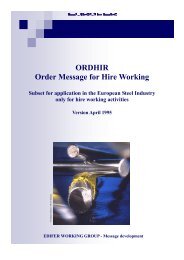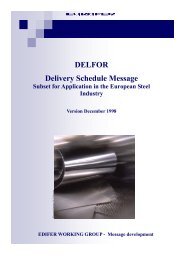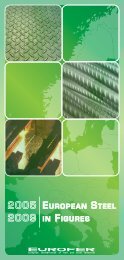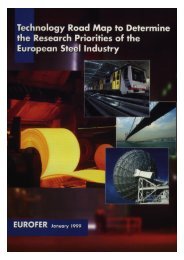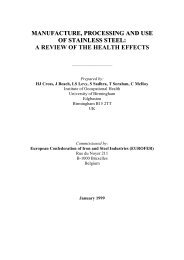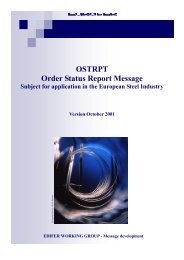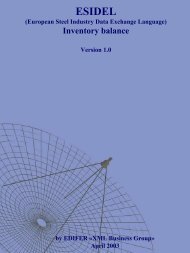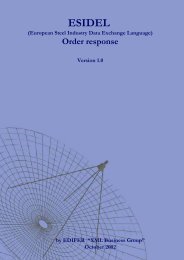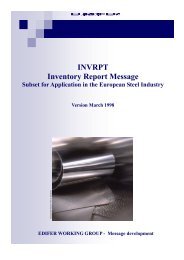Multi Industry Scenarios for Transport - Eurofer
Multi Industry Scenarios for Transport - Eurofer
Multi Industry Scenarios for Transport - Eurofer
You also want an ePaper? Increase the reach of your titles
YUMPU automatically turns print PDFs into web optimized ePapers that Google loves.
61<br />
MIST Working Group, version 2001<br />
If contracting parties agree, this confirmation may be achieved by the use of the IFTSTA<br />
message.<br />
On carriage transport scenario<br />
The on-carriage transport can be carried out by any transport mode. There<strong>for</strong>e<br />
For details of the on carriage transport scenario reference should be made to<br />
the appropriate scenario <strong>for</strong> the relevant transport mode.<br />
If automatic identification is used <strong>for</strong> transport purposes, the labelling is indicated in that<br />
specific on-carriage scenario. The transport label may be used to check the loading of the<br />
goods from the main-carriage to the on carriage.<br />
13. Advice of receipt of goods<br />
Once the consignee has received the goods, the consignee will check these goods with the<br />
goods announced in the despatch advice. The consignee will send to the consignor a<br />
document confirming the reception of the received goods inline with the despatch advice.<br />
For example, “Consignor’s reference X, Consignee’s reference X, Wagon no. W,<br />
despatched Consignor’s premises X date, 25 tonnes case numbers hereunder, arrived<br />
Consignee’s premises X date”<br />
If EDI is used, this will be done by the message RECADV.<br />
14. Return of empty container(s)<br />
Once the consignee has unloaded the goods he will release the containers by announcing<br />
them to the carrier. This date/time may influence the charges linked to the usage of the<br />
container(s).<br />
In a general way the wagons are sent back to the equipment owner or lessee.<br />
Practically we can consider two different cases:<br />
a. The empty containers are kept by the customer in order to be re-used <strong>for</strong> a new<br />
consignment.<br />
There is no additional message needed since this will be included in the scenario of the<br />
new transport loop, where these containers will be part of (re: commercial contract <strong>for</strong><br />
practical procedure).<br />
b. The empty containers are sent back to the container owner.<br />
If EDI is used, this will be done by the message COPARN.


